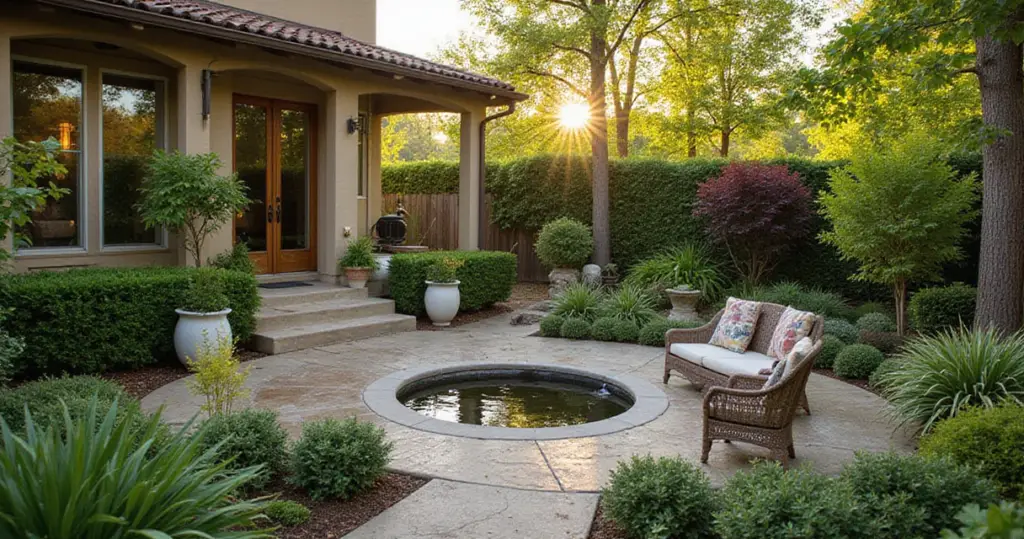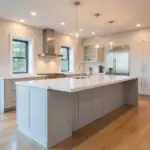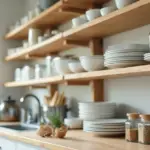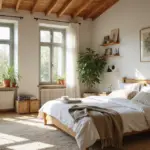Creating your perfect backyard isn’t just about throwing together a few plants and calling it done. It’s about crafting an outdoor sanctuary that reflects your lifestyle, enhances your home’s value, and provides years of enjoyment for you and your family. Whether you’re working with a compact urban plot or sprawling suburban grounds, the principles remain the same: thoughtful planning, smart material choices, and designs that honor both your vision and your site’s natural characteristics.
The difference between a backyard that truly works and one that disappoints often comes down to process. Too many homeowners dive straight into purchasing plants or hardscaping materials without considering how each element will work together, or worse, how their choices will perform in their specific climate and conditions. This approach leads to costly mistakes, maintenance headaches, and spaces that never quite feel right.
By following these 19 essential steps, you’ll develop a comprehensive approach to backyard design that addresses everything from initial vision to final storage solutions. Each step builds upon the previous one, creating a logical progression that ensures no critical element gets overlooked. Ready to transform your outdoor space into the retreat you’ve always envisioned?
1. Define Your Vision and Lifestyle Needs
Before touching a single plant or paver, spend time crystallizing exactly how you want to live in your outdoor space. This foundational step involves honest conversations with everyone who will use the backyard about their needs, preferences, and dreams. Are you envisioning quiet morning coffee moments surrounded by fragrant herbs, or do you see yourself hosting lively dinner parties under string lights? Perhaps you need a safe play zone for children alongside sophisticated entertaining areas for adults.
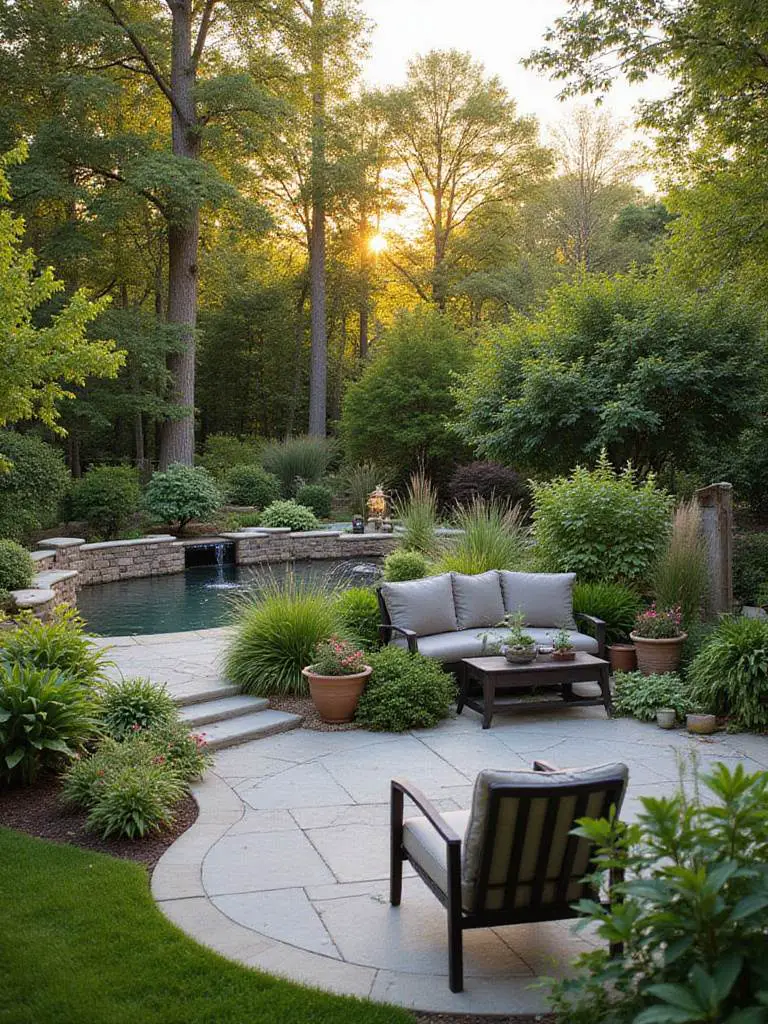
The magic happens when you move beyond Pinterest-worthy images to consider the practical realities of your daily life. A family with young children might prioritize open lawn space and durable materials that can withstand soccer balls and sidewalk chalk. Empty nesters, on the other hand, might gravitate toward low-maintenance plantings and intimate seating areas that encourage relaxation and conversation. Document these insights carefully – they’ll guide every subsequent decision and help you avoid the common trap of creating a beautiful space that doesn’t actually serve your needs.
After months of sourcing and curation, the most successful backyard design projects begin with this clarity of purpose, ensuring every element serves the life you want to live outdoors.
2. Assess Your Site’s Natural Conditions
Understanding your property’s unique personality – its sun patterns, soil composition, drainage characteristics, and microclimates – forms the foundation for all successful outdoor design decisions. This detective work involves observing how sunlight moves across your space throughout the day and across seasons, noting where water naturally flows during rain, and understanding what type of soil you’re working with. These aren’t just technical details; they’re the building blocks that determine which plants will thrive and where your patio should be positioned for optimal comfort.
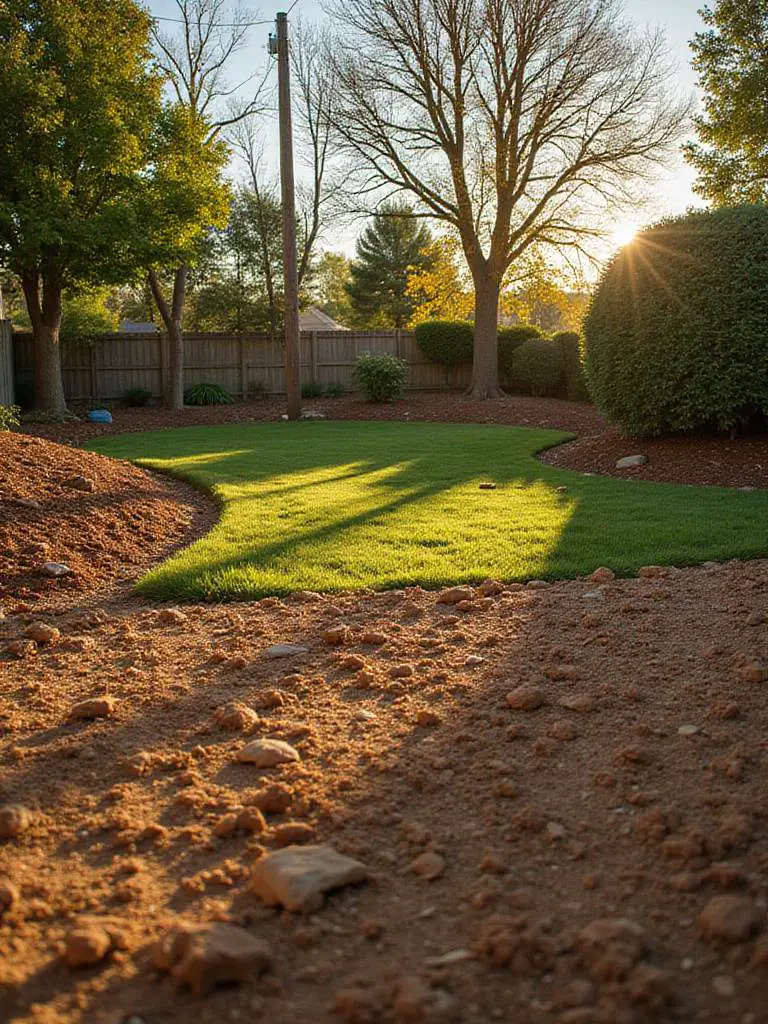
Take time to conduct simple tests that reveal your site’s secrets. Dig small holes in different areas and fill them with water to observe drainage rates. Clay soil that drains slowly might be perfect for a rain garden but challenging for Mediterranean herbs that prefer quick drainage. Note how afternoon sun hits your potential seating areas – that gorgeous western exposure might be too intense for comfortable dining in summer. Wind patterns matter too, especially if you’re considering a fire feature or delicate plantings.
What makes this design special is the way these natural conditions become opportunities rather than limitations when properly understood and embraced.
3. Create Functional Zones for Different Activities
Think of your backyard as a collection of outdoor rooms, each designed for specific activities and experiences. Successful zoning involves designating areas for dining, relaxation, play, gardening, and storage while ensuring smooth flow between these spaces. This approach maximizes your yard’s potential by giving every square foot a purpose, whether it’s a quiet reading nook tucked behind ornamental grasses or an open lawn area perfect for games and gatherings.
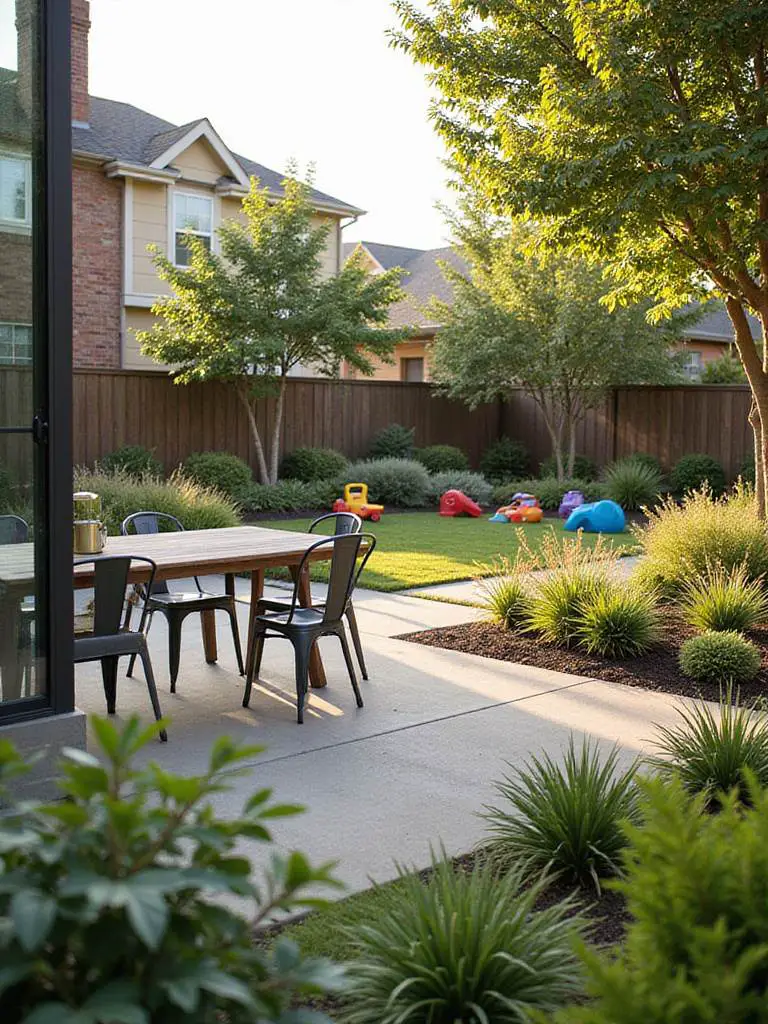
The key lies in understanding how these zones relate to each other and to your home’s interior spaces. Position dining areas within easy reach of your kitchen, create sight lines that allow supervision of play areas from adult gathering spots, and ensure pathways connect everything logically. Consider how different times of day affect each zone – morning coffee spots benefit from eastern exposure, while evening entertaining areas might prefer western light filtered through pergola slats or mature trees.
The interplay between the zones creates a backyard that feels both spacious and intimate, accommodating solitary moments and social gatherings with equal grace.
4. Choose Materials That Reflect Your Style
Your material palette sets the aesthetic tone for your entire backyard design and determines how well your outdoor space integrates with your home’s architecture. Whether you’re drawn to the clean lines of contemporary concrete pavers, the rustic charm of reclaimed brick, or the timeless elegance of natural stone, these choices should feel like a natural extension of your indoor living spaces. The goal isn’t just beauty – it’s creating a cohesive environment where materials complement each other and your home’s existing character.
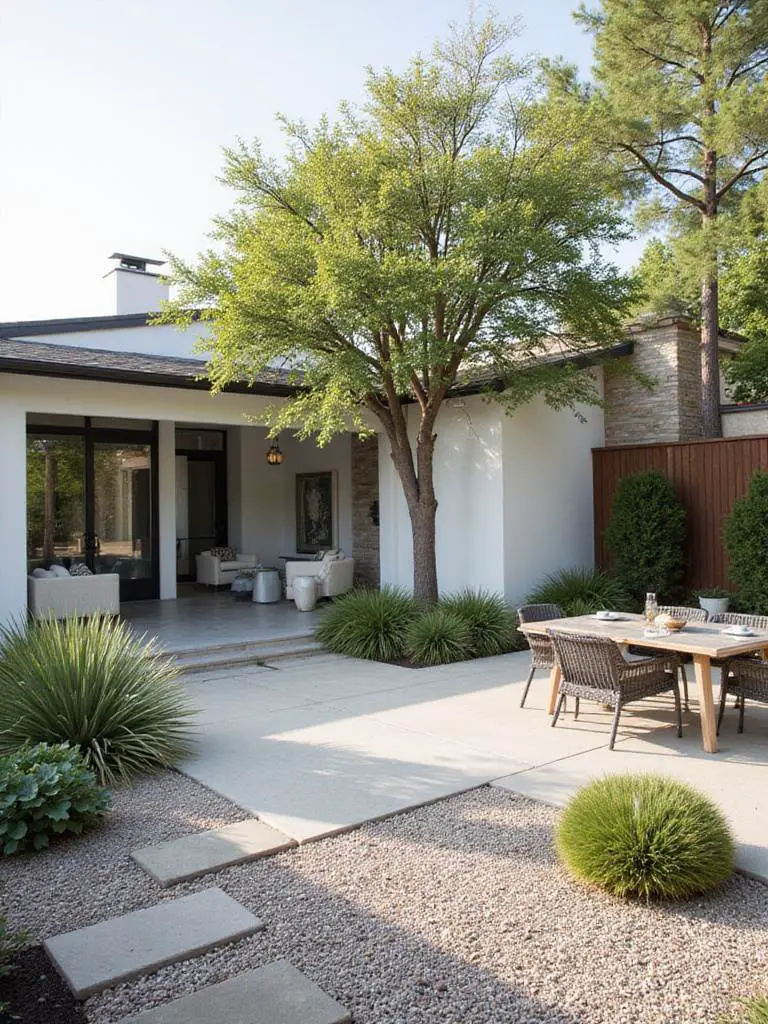
Consider how different materials age and patina over time, especially in your specific climate. Natural stone develops character through weathering, while certain metals gain appealing oxidation. Some materials require regular maintenance to look their best, while others improve with age and minimal intervention. Factor in practical considerations like slip resistance for pool areas, heat retention for sunny patios, and how materials will feel underfoot during different seasons.
The composition comes together when you layer complementary textures and finishes that create visual interest without overwhelming the space.
5. Establish a Realistic Budget Framework
Setting a clear budget before falling in love with expensive features prevents the heartbreak of scaling back mid-project and ensures your backyard design actually gets completed. This involves researching real costs for desired elements – not just materials, but installation, permits, and ongoing maintenance. A well-planned budget includes categories for hardscaping, plants, lighting, irrigation, and the inevitable unexpected discoveries that come with any outdoor project.
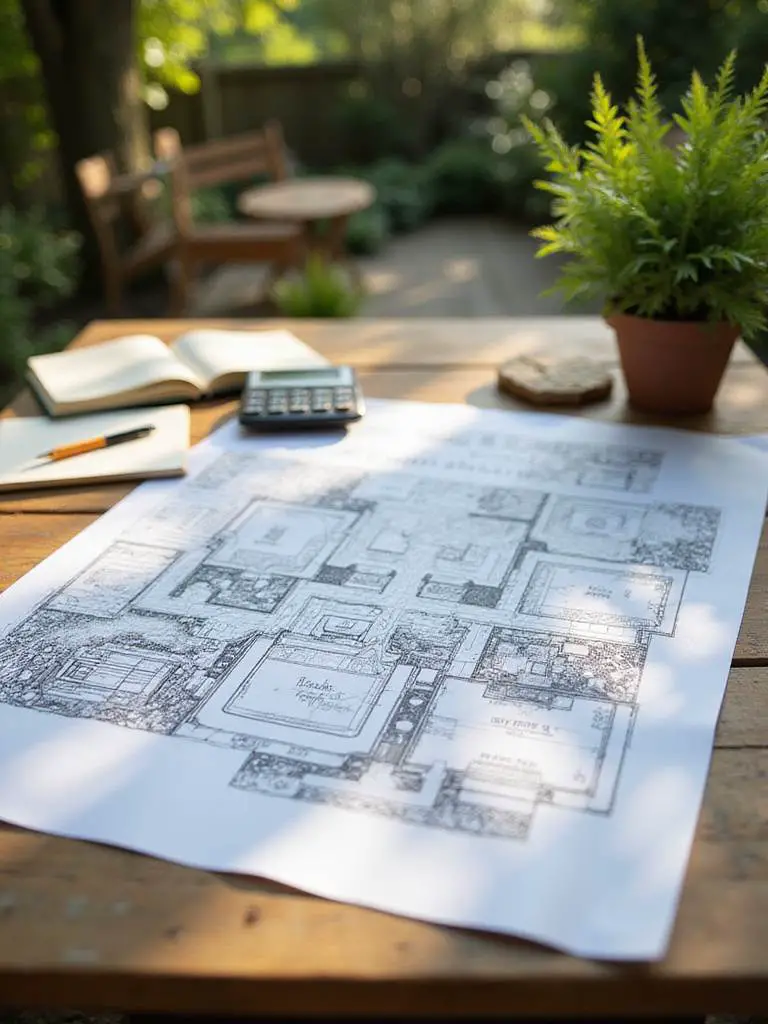
Professional designers recommend allocating roughly 40% of your budget to hardscaping (patios, paths, structures), 30% to plants and soil preparation, 20% to features like lighting and irrigation, and 10% as a contingency fund. These percentages shift based on your priorities – a family focused on entertaining might invest more heavily in hardscaping, while passionate gardeners might allocate additional funds to plant selection and soil amendment. The key is making these decisions consciously rather than reactively.
The unexpected pairing that always works is realistic budgeting with phased implementation, allowing you to create your dream space over time without financial strain.
6. Select Plants for Long-Term Success
Plant selection goes far beyond choosing species that look appealing at the nursery. Successful backyard design requires matching plants to your specific site conditions, climate zone, and maintenance capacity. This means understanding mature sizes, growth rates, water requirements, and seasonal characteristics before making purchases. Native and adapted plants typically offer the best combination of beauty and resilience, requiring less water, fertilizer, and pest management once established.
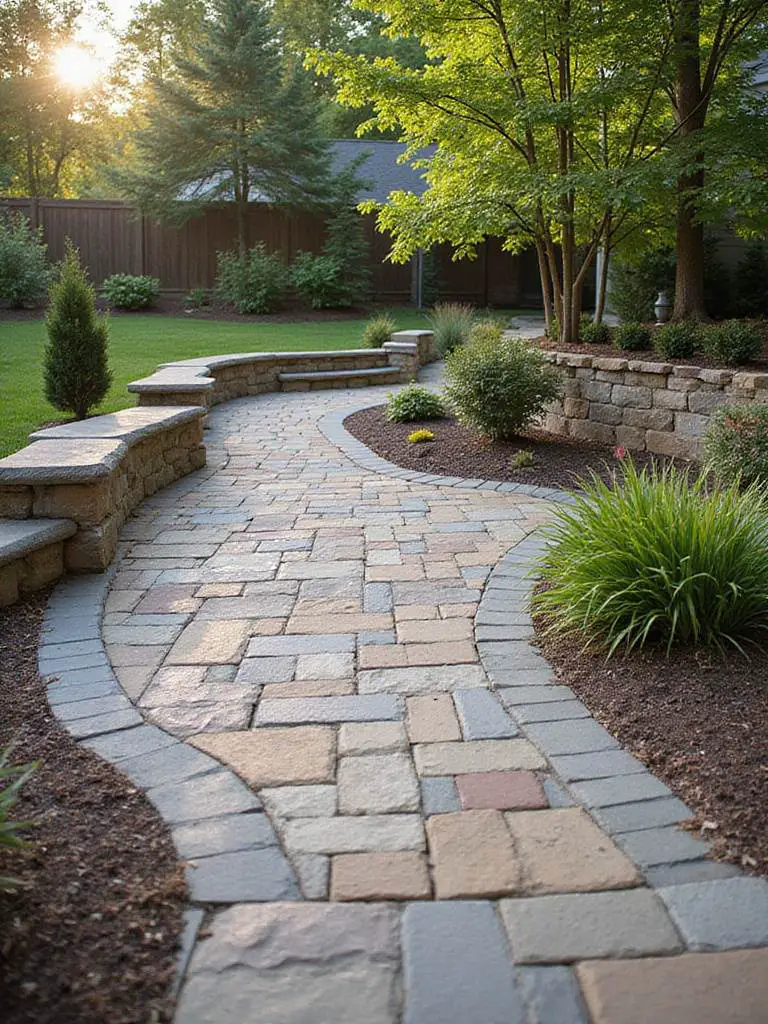
Consider the four-season interest each plant provides – spring flowers, summer foliage, fall color, winter structure – and how different species work together throughout the year. Group plants with similar water and light requirements to simplify maintenance and create more naturalistic plantings. Think beyond individual specimens to envision how your plant palette will create the atmosphere you want, whether that’s a cottage garden’s abundant informality or a modern landscape’s architectural precision.
The designer’s secret here is to choose plants that will thrive in your specific conditions rather than fighting against them, creating a garden that grows more beautiful with age.
7. Plan Pathways That Invite Exploration
Thoughtfully designed walkways do more than provide safe passage between areas – they control the pace of movement through your space and create opportunities for discovery along the way. The width, material, and routing of paths influence how people experience your garden, whether they hurry directly to destinations or meander while noticing details. Main circulation routes need sufficient width for two people to walk comfortably side by side, while secondary paths can be more intimate.
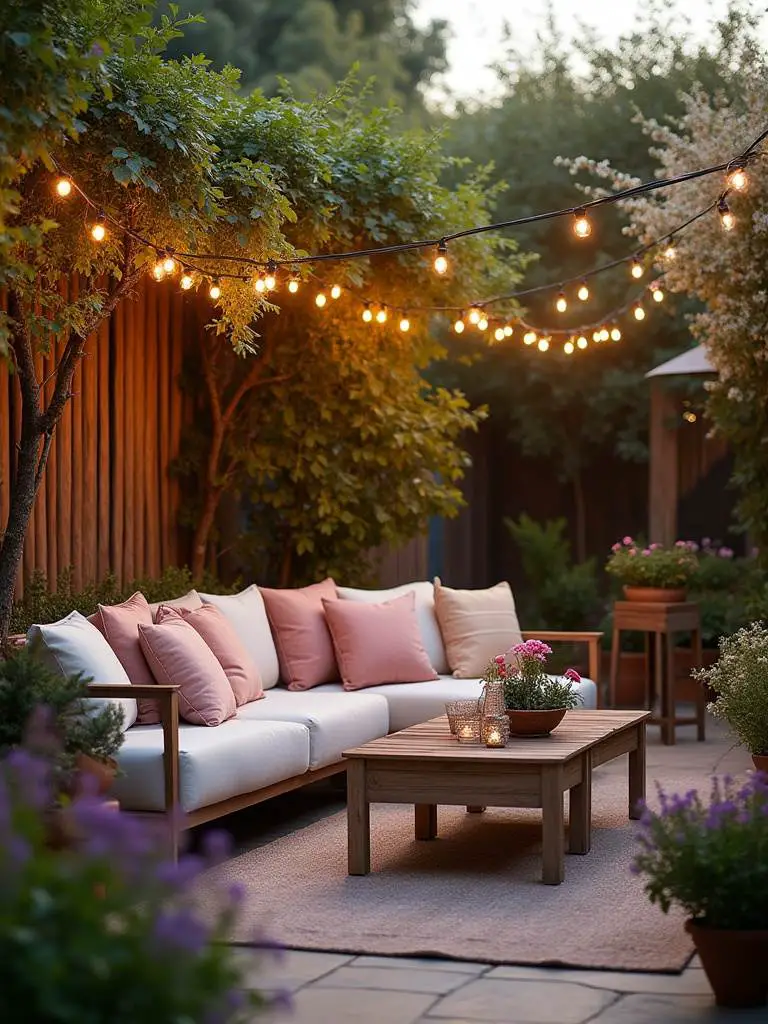
Path materials should complement your overall design while providing appropriate traction and durability for their intended use. Consider how different materials feel underfoot and how they’ll perform in wet conditions. Gentle curves often feel more natural and interesting than straight lines, and strategic placement can frame views or hide less attractive areas. The rhythm of stepping stones, the crunch of gravel, or the solid feel of flagstone all contribute to the sensory experience of moving through your space.
As morning light filters through, the texture creates shadows and highlights that transform simple walkways into design elements that enhance your garden’s beauty.
8. Design Comfortable Outdoor Living Areas
Creating inviting outdoor rooms requires the same attention to comfort, scale, and function as interior spaces. Successful seating areas consider orientation to sun and wind, proximity to indoor amenities, and the number of people you typically entertain. A dining area needs different proportions and amenities than a quiet reading spot or a fire pit gathering circle. Each outdoor room should feel purposeful and complete, with appropriate surfaces, seating, lighting, and weather protection.
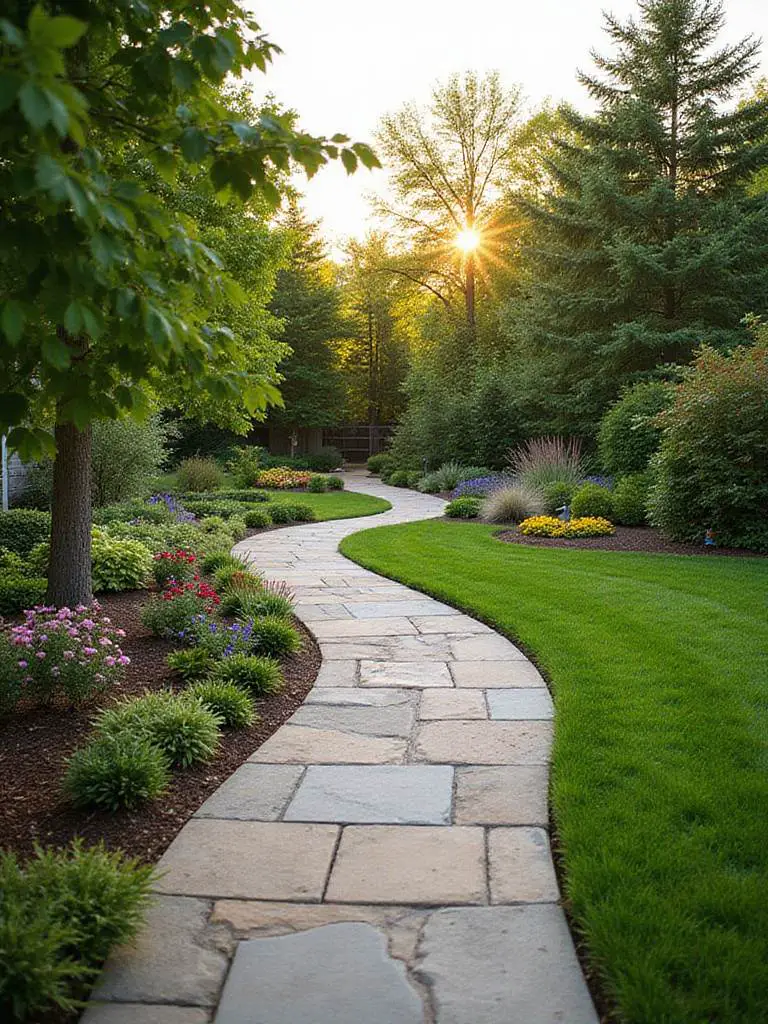
The key to comfort lies in understanding how these spaces will be used throughout the day and across seasons. Morning coffee spots benefit from eastern exposure and wind protection, while evening entertaining areas might need overhead coverage and ambient lighting. Consider sight lines both within your property and beyond – frame attractive views while screening less desirable ones. Flexible furniture arrangements allow spaces to adapt to different group sizes and activities.
The mood shifts dramatically when you add elements like outdoor rugs, cushions, and side tables that make outdoor spaces feel as comfortable and intentional as indoor rooms.
9. Incorporate Water for Sensory Appeal
Water features transform outdoor spaces by adding movement, sound, and reflective surfaces that change throughout the day. The gentle splash of a fountain or the quiet burble of a stream creates natural white noise that masks traffic sounds and provides a sense of tranquility. Water also attracts beneficial wildlife like birds and butterflies, adding life and movement to your garden. The scale and style of water features should match your space and maintenance capacity – a small bubbling urn might be perfect for a courtyard, while a naturalistic pond suits a larger, informal garden.
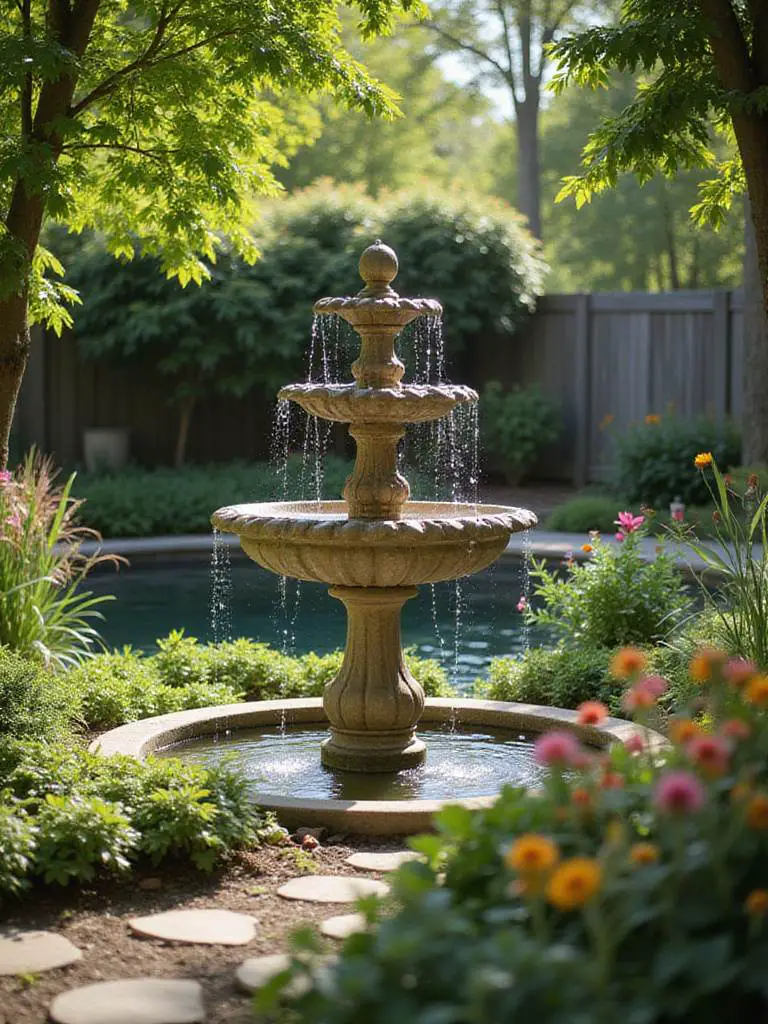
Consider how water sounds travel through your space and how they’ll affect both your enjoyment and your neighbors’ peace. Position features where they can be seen and heard from primary seating areas, and ensure reliable access to electricity and water sources for pumps and maintenance. The reflective qualities of water can make spaces feel larger and brighter, especially when positioned to catch sky and surrounding plantings.
The ambiance evolves throughout the day as natural light plays across moving water, creating an ever-changing focal point that draws people into the space.
10. Add Fire Features for Extended Seasons
Fire features extend your backyard design’s usability well beyond warm weather, creating gathering spots that remain comfortable even when temperatures drop. Whether you choose a built-in fireplace, a portable fire bowl, or a gas fire table, these elements provide both practical warmth and the primal appeal of flickering flames. The key is selecting the right scale and fuel type for your space, usage patterns, and local regulations.
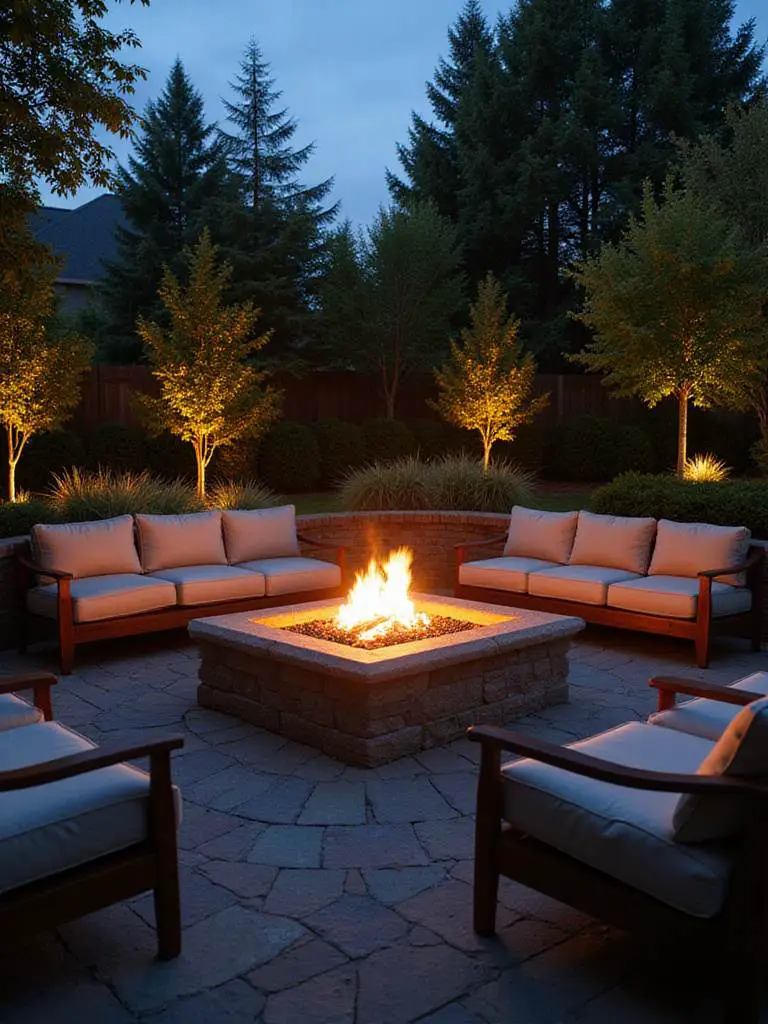
Position fire features with safety as the primary consideration, maintaining appropriate clearances from structures, overhanging branches, and combustible materials. Consider prevailing wind patterns to avoid smoke problems, and think about seating arrangements that take advantage of radiant heat without creating crowded conditions. Gas features offer convenience and precise control, while wood-burning options provide the authentic crackle and aroma that many people prefer.
Picture the warmth of evening conversations around a crackling fire, extending your outdoor season by months and creating memories that last far beyond summer.
11. Layer Lighting for Safety and Atmosphere
Effective outdoor lighting serves dual purposes: ensuring safe navigation after dark and creating ambiance that makes your backyard design magical in the evening hours. A well-designed lighting plan layers different types of fixtures – path lights for safety, uplights for drama, and ambient lighting for comfort – to create depth and visual interest. The goal is providing adequate illumination without harsh glare or light pollution that disturbs neighbors or wildlife.
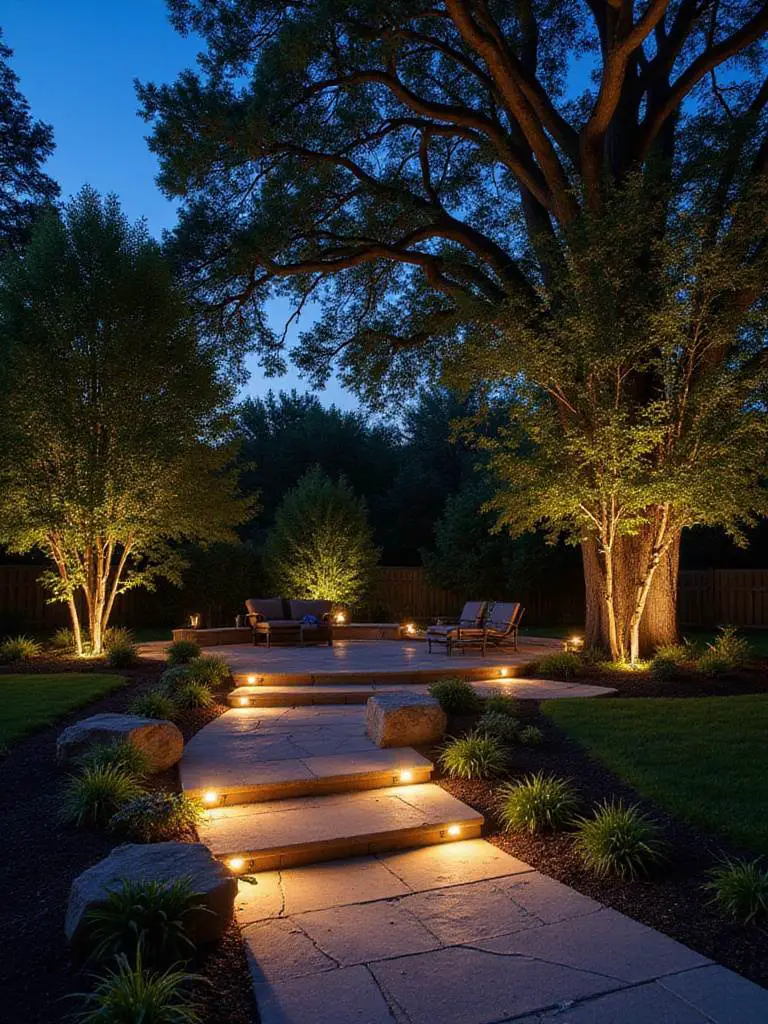
Start with safety lighting for steps, path changes, and potential hazards, then add accent lighting to highlight architectural features, specimen plants, or water features. Ambient lighting from string lights, lanterns, or soft downlighting creates comfortable gathering spaces. Modern LED fixtures offer energy efficiency, longevity, and precise color control, while smart systems allow easy adjustment of intensity and timing.
The emotional response this evokes begins with the sense of security that comes from well-lit pathways and extends to the magic of a garden transformed by thoughtful illumination.
12. Create Privacy Through Strategic Screening
Privacy transforms your backyard from a space where you feel observed into a true retreat where you can relax completely. Effective screening involves understanding exactly which sight lines need blocking and choosing solutions that provide coverage without creating a fortress-like atmosphere. Living screens using hedges, ornamental grasses, or trained vines often feel more natural than solid fencing, while combinations of plants and structures can provide immediate coverage that improves over time.
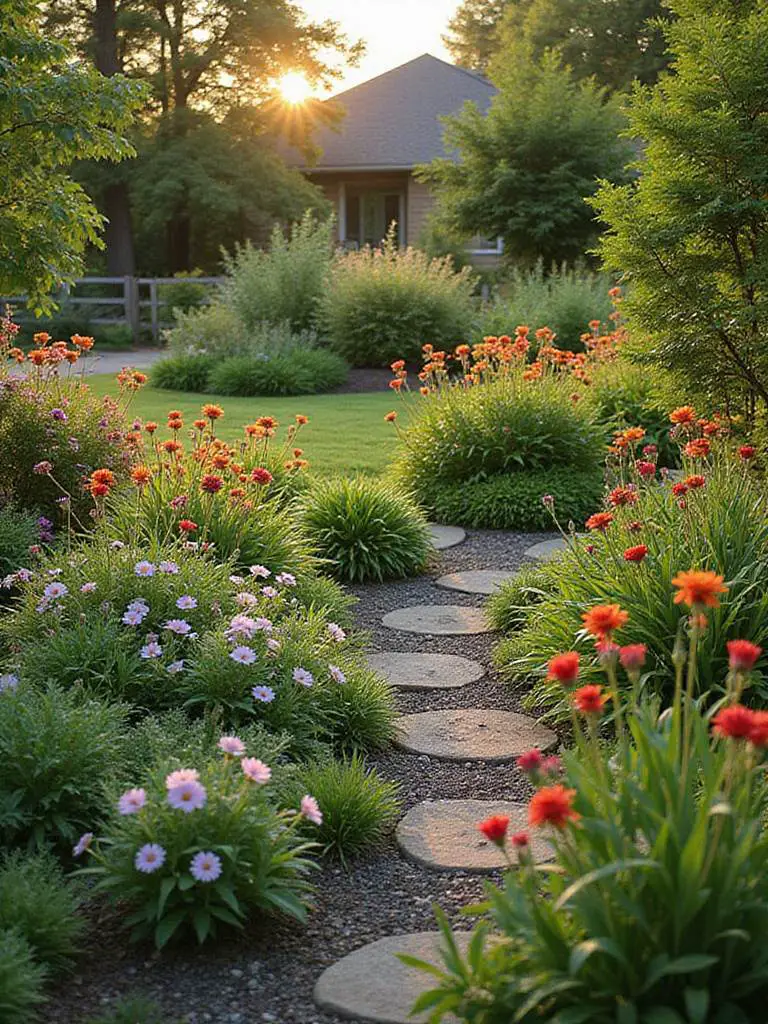
Consider the height and density needed for effective screening from different vantage points – sitting, standing, and from second-story windows. Layered plantings create more interesting and effective barriers than single-species hedges, and incorporating flowering or fruiting plants adds seasonal interest to functional elements. Remember that privacy works both ways – screens that block unwanted views also prevent you from seeing beyond your property, so position them thoughtfully.
The challenge of awkward spaces becomes easier when you view privacy elements as opportunities to create intimate outdoor rooms rather than simply blocking views.
13. Maximize Space with Vertical Elements
Vertical gardening and structures multiply your planting opportunities without consuming precious ground space, making them especially valuable in smaller backyard design projects. Trellises, arbors, and living walls transform blank fences or walls into productive or beautiful features while adding architectural interest to the landscape. Climbing plants can provide quick privacy screening, seasonal flowers, or even edible harvests when space for traditional gardens is limited.
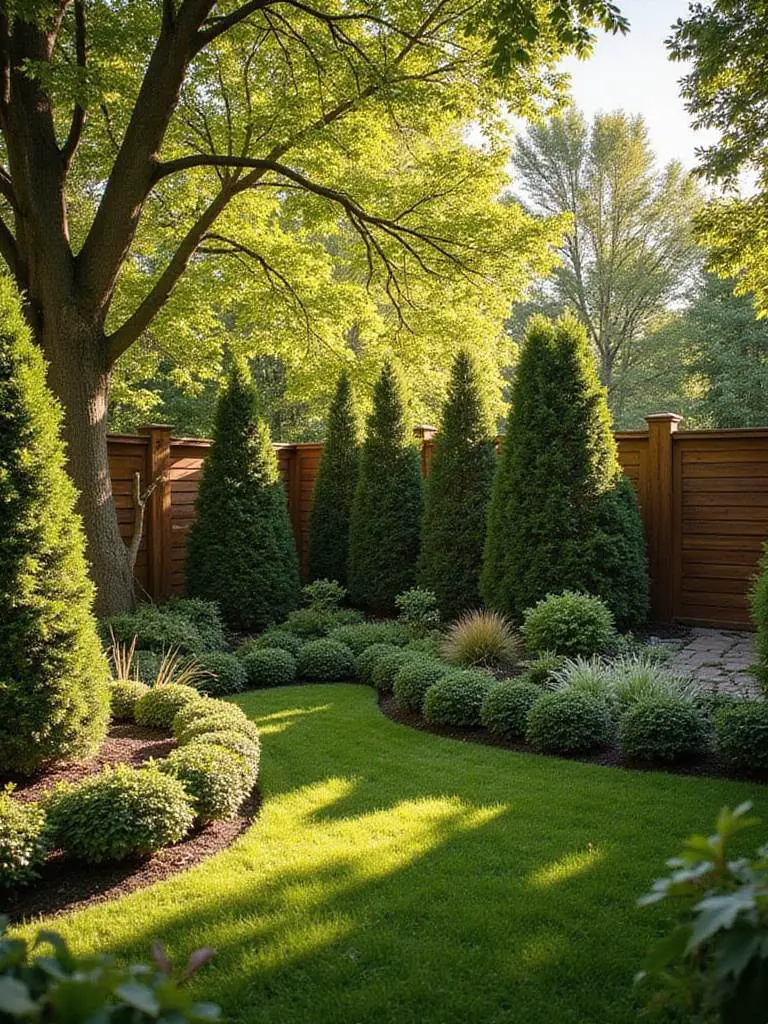
Choose structures that complement your overall design style and can support the mature weight of your chosen plants. Consider maintenance access for pruning, harvesting, and plant care when positioning vertical elements. Some climbers require annual removal and replanting, while others become permanent fixtures that provide structure even in winter. Irrigation becomes more critical for vertical plantings, as elevated containers and wall-mounted systems dry out faster than ground-level beds.
Beyond the obvious placement, consider using vertical elements to create outdoor rooms, frame views, or provide overhead coverage that makes spaces feel more intimate and protected.
14. Integrate Edible Plants Seamlessly
Blending edible plants into ornamental landscapes challenges the traditional separation between decorative and productive gardening. Many vegetables, herbs, and fruits offer exceptional ornamental value – think of the architectural drama of artichokes, the colorful stems of rainbow chard, or the delicate flowers of bean vines. This approach maximizes your garden’s productivity while maintaining aesthetic appeal, and edible flowers add both beauty and culinary interest to your outdoor space.
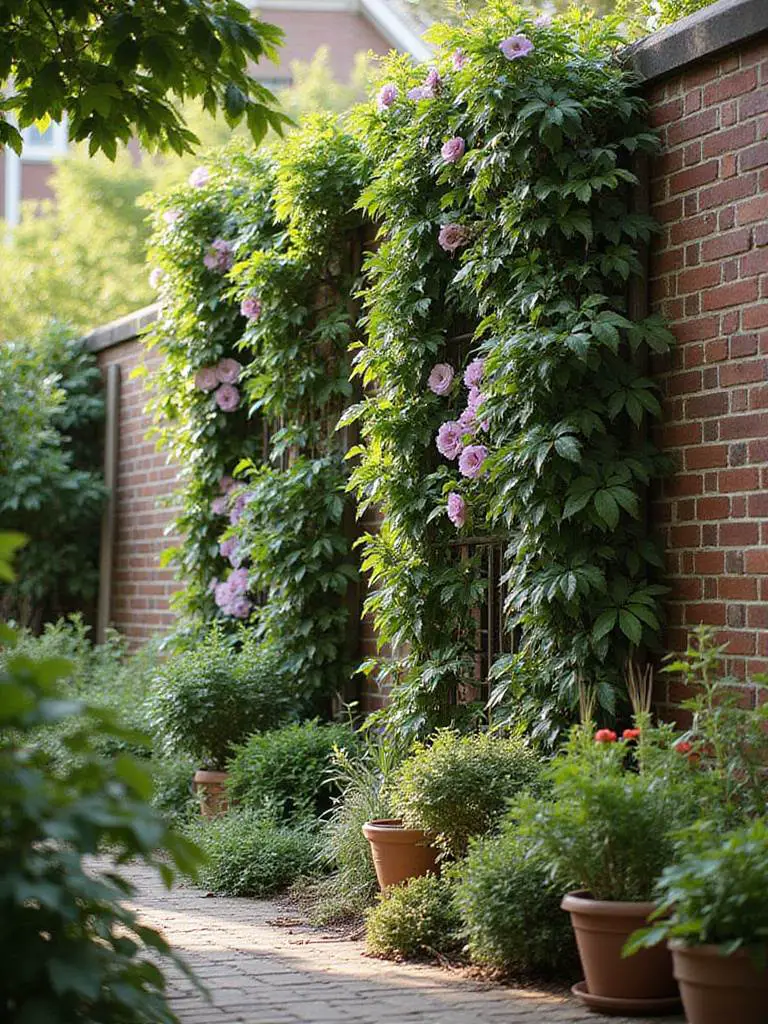
Consider the maintenance requirements of edible plants, which often need more consistent watering, feeding, and pest monitoring than ornamental species. Position them where they’ll receive appropriate light and be easily accessible for harvesting and care. Some edibles, like herbs and salad greens, can be grown in containers that move with changing seasons or design needs. Others, like fruit trees and berry bushes, become permanent landscape features that provide structure and seasonal interest.
The styling mistake most people make is treating edibles as afterthoughts rather than integrating them thoughtfully into the overall design composition.
15. Ensure Proper Drainage Throughout
Water management might not be the most exciting aspect of backyard design, but it’s absolutely critical for protecting your investment and ensuring long-term success. Poor drainage leads to plant death, structural damage, and unusable soggy areas that undermine all your careful planning. Understanding how water moves across your site during different weather conditions allows you to work with natural patterns rather than against them.
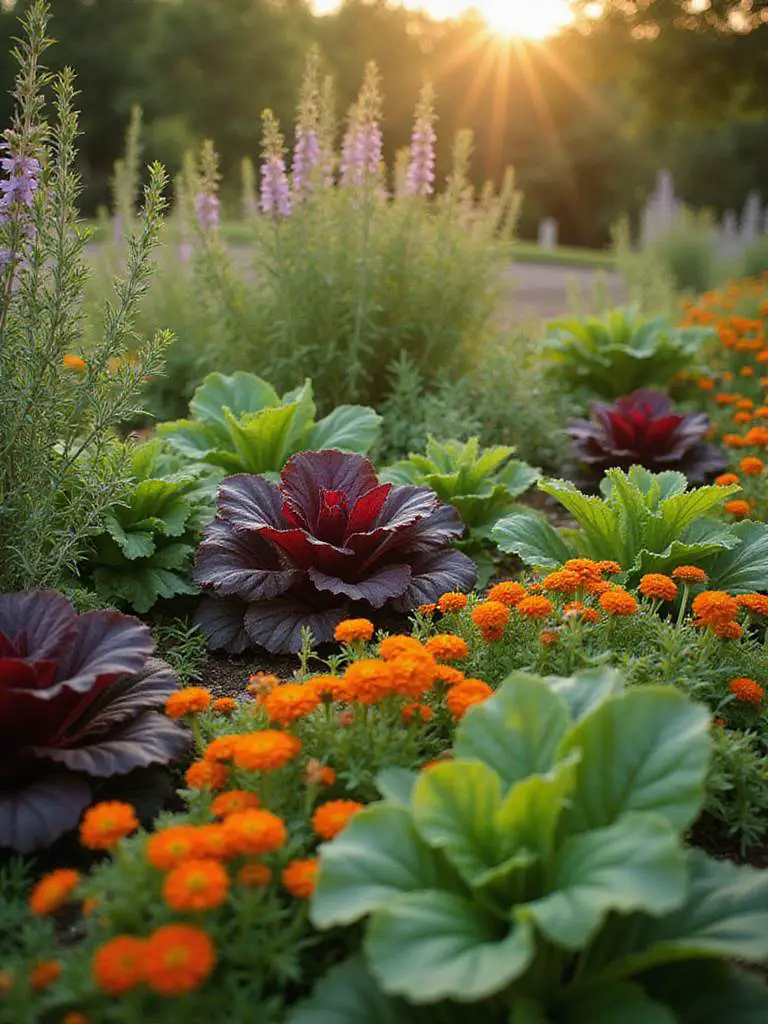
Solutions range from simple grading adjustments that direct water away from structures to more complex systems like French drains or rain gardens that manage significant runoff. Permeable paving materials allow water to infiltrate rather than creating additional runoff, while strategic plant placement can help absorb excess moisture in problematic areas. The key is addressing drainage issues during the design phase rather than trying to retrofit solutions later.
The sustainable journey of this material involves understanding that water is a resource to be managed thoughtfully rather than simply channeled away as quickly as possible.
16. Choose Low-Maintenance Solutions
Designing for minimal maintenance allows you to spend more time enjoying your outdoor space and less time working in it. This doesn’t mean settling for boring or basic – it means choosing plants, materials, and features that provide maximum impact with minimal ongoing care. Native plants, automated irrigation, and durable hardscaping materials all contribute to a landscape that improves with age rather than requiring constant intervention.
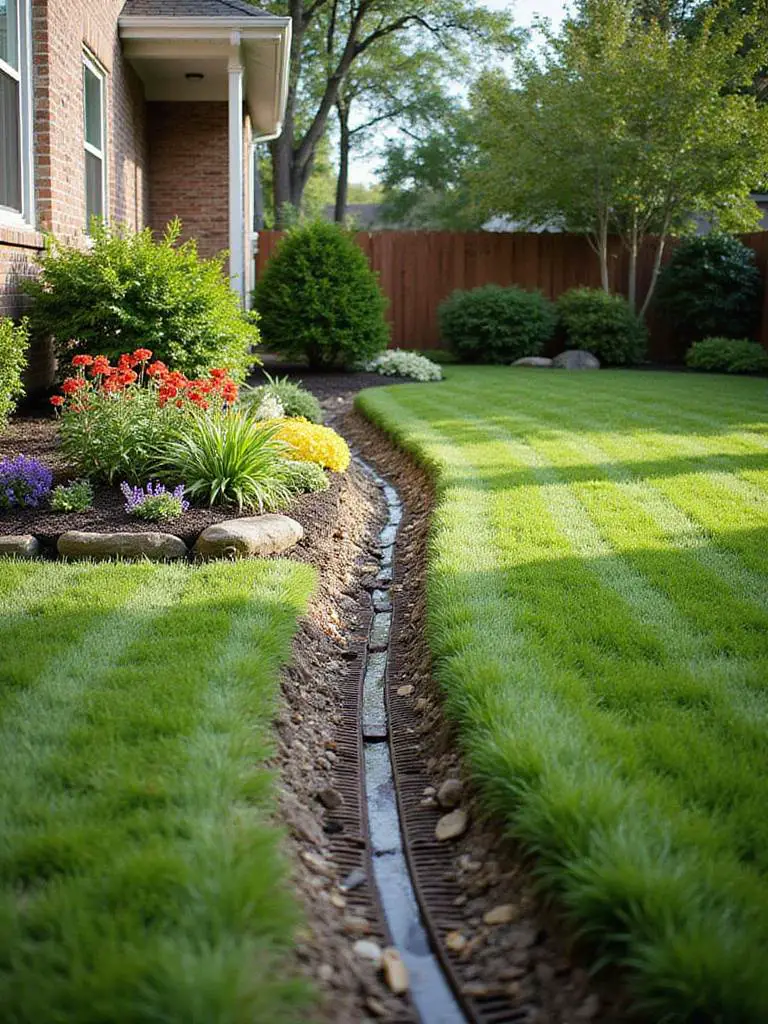
Group plants with similar water and care requirements to simplify maintenance routines, and choose species that won’t outgrow their intended spaces quickly. Mulching reduces weeding and watering needs, while proper soil preparation at installation time prevents many future problems. Consider the long-term costs of maintenance when evaluating different options – sometimes higher initial investment in quality materials or automatic systems pays for itself through reduced ongoing care.
What surprises clients most is how thoughtful plant selection and design can create a garden that becomes more beautiful and easier to care for over time.
17. Support Local Wildlife Naturally
Creating habitat for beneficial insects, birds, and other wildlife enhances your backyard design’s ecological value while reducing pest problems naturally. Native plants provide the specific food sources and nesting sites that local wildlife species need, creating a balanced ecosystem that supports itself with minimal intervention. This approach often results in more interesting and dynamic gardens as seasonal wildlife activity adds movement and life to the space.
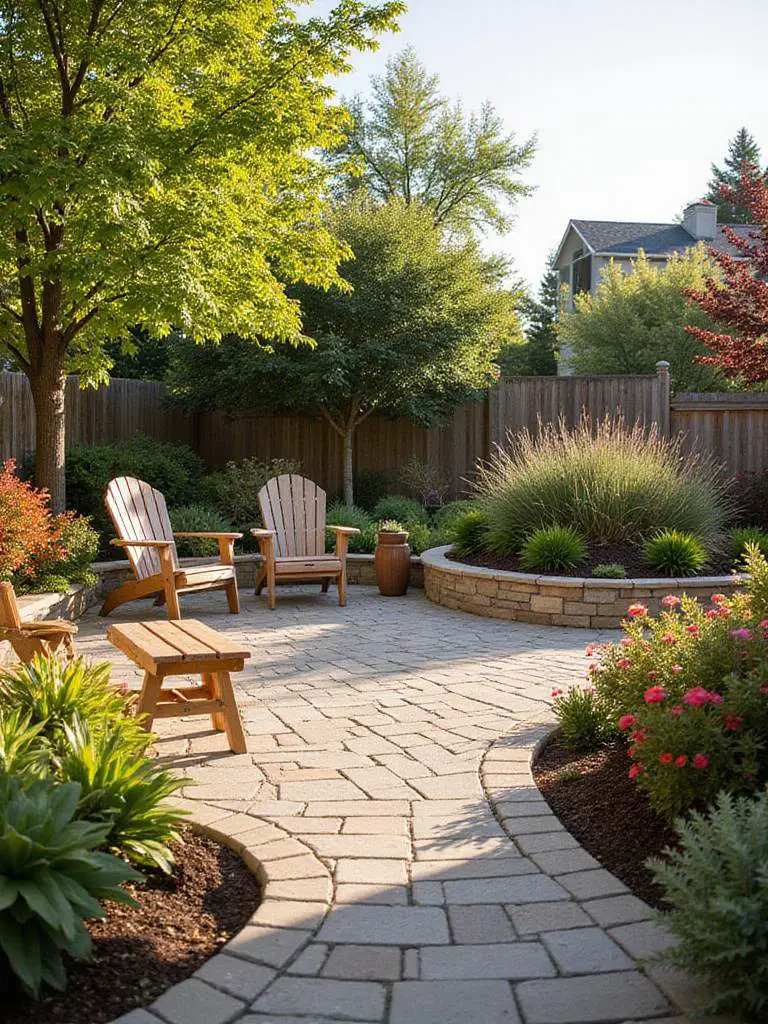
Focus on plants that provide nectar, pollen, seeds, and berries throughout the growing season, ensuring continuous food sources for different species. Include host plants for butterfly and moth caterpillars, even if they experience some leaf damage – this is part of supporting the complete life cycles of beneficial insects. Avoid pesticides that harm beneficial species along with pests, and provide water sources like shallow dishes or bird baths that serve multiple species.
The environmental story behind this piece began with understanding that even small suburban gardens can serve as important habitat corridors that support broader ecosystem health.
18. Plan Adequate Storage Solutions
Even the most beautiful backyard can look cluttered and unkempt without proper storage for tools, cushions, toys, and seasonal items. Smart storage solutions keep necessary items accessible while maintaining clean sight lines and protecting valuable equipment from weather damage. The key is planning storage needs early in the design process rather than trying to hide unsightly sheds or bins as an afterthought.
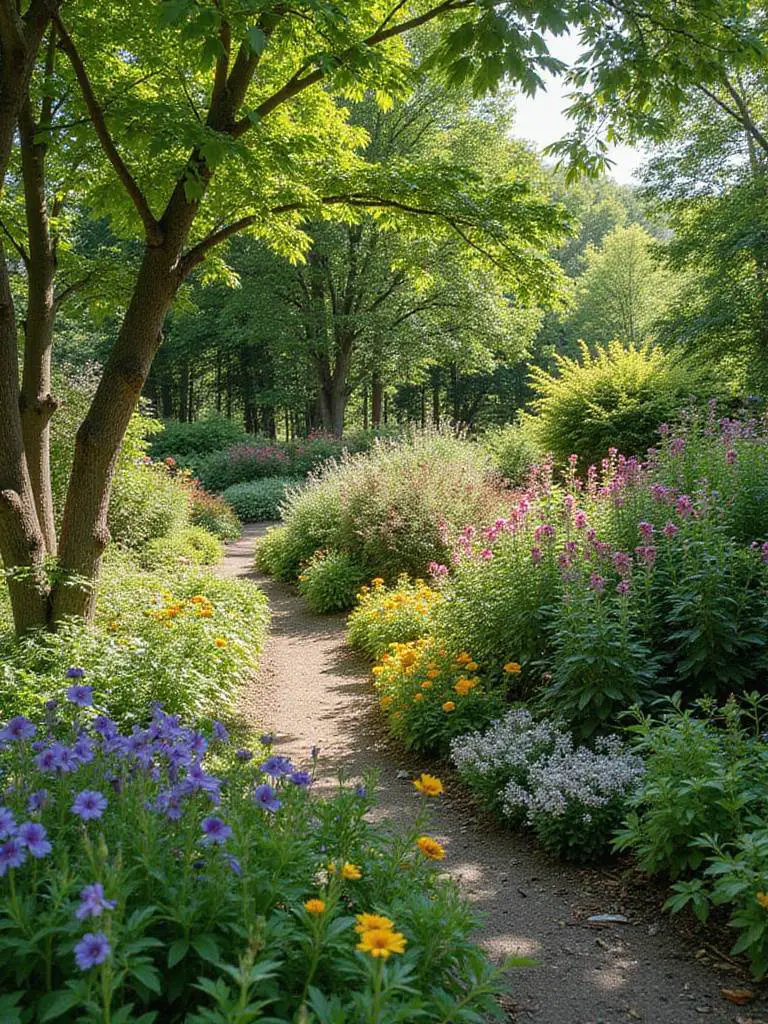
Consider both visible and hidden storage options that complement your overall design aesthetic. Built-in benches with interior storage, decorative screens that hide utility areas, and attractive sheds that serve as focal points all provide function without compromising beauty. Think about what items need frequent access versus seasonal storage, and position storage accordingly. Weather resistance, security, and ease of access should all factor into your storage planning.
The finishing touch that elevates the entire look is ensuring that every functional element, including storage, contributes to rather than detracts from your outdoor space’s overall appeal.
19. Install Efficient Irrigation Systems
Proper irrigation ensures your backyard design thrives while conserving water and reducing maintenance time. Modern irrigation technology allows precise water delivery that matches plant needs and soil conditions, eliminating both drought stress and overwatering problems. Drip irrigation systems deliver water directly to root zones with minimal evaporation, while smart controllers adjust watering schedules based on weather conditions and seasonal plant needs.
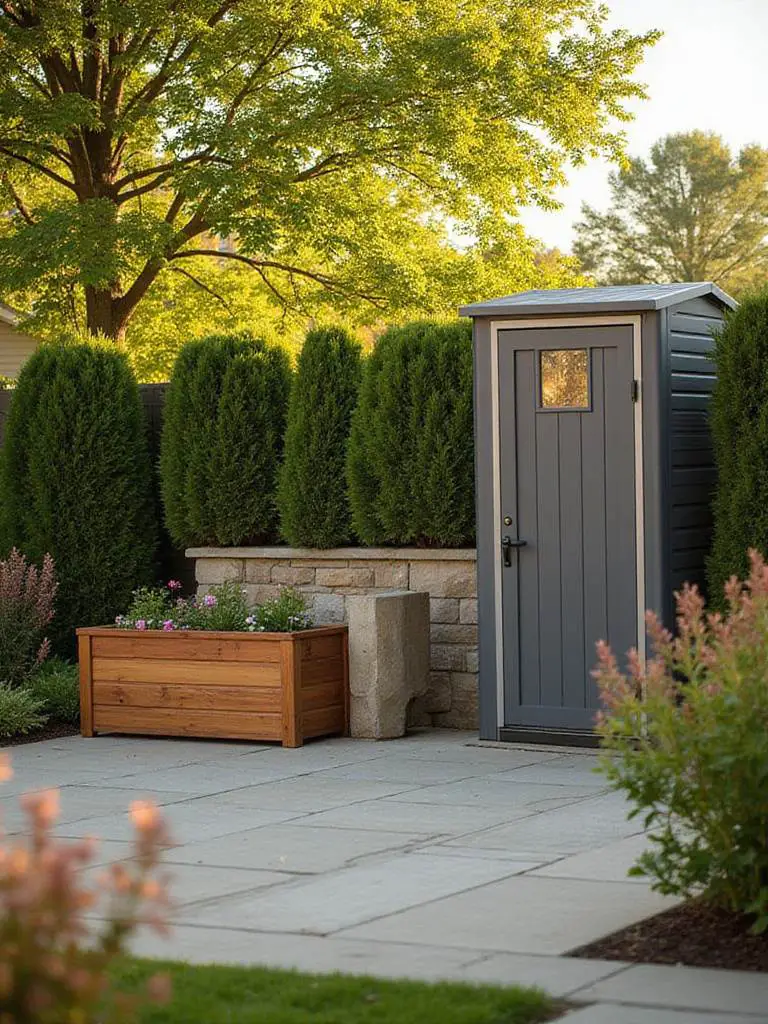
Zone your irrigation system to group plants with similar water requirements, allowing customized watering schedules that promote plant health while conserving resources. Consider soil type, sun exposure, and plant maturity when designing irrigation zones. Proper system design includes adequate pressure, appropriate emitter spacing, and easy access for maintenance and adjustments. Rain sensors and soil moisture monitors can further optimize water use while protecting plants during varying weather conditions.
The unexpected environmental benefit comes from using water efficiently while maintaining the lush, healthy landscape that provides cooling, air purification, and habitat benefits.
Conclusion
Mastering your backyard design requires patience, planning, and a willingness to think holistically about how all elements work together. These 19 steps provide a roadmap for creating outdoor spaces that reflect your lifestyle, respect your site’s natural conditions, and provide years of enjoyment with minimal ongoing stress. The investment of time and thought in the planning stages pays dividends in reduced maintenance, increased usability, and enhanced property value.
Remember that great outdoor spaces evolve over time. Plants mature, your needs change, and new opportunities for improvement become apparent as you live with your design. Start with solid bones – good drainage, appropriate hardscaping, and well-chosen plant locations – then allow your space to develop character through seasons of growth and use.
Your backyard has the potential to become the most valuable and enjoyable room of your home. By following these essential steps and adapting them to your specific situation, you’re well on your way to creating an outdoor sanctuary that enhances your daily life and provides a lasting legacy of thoughtful design. The journey from ordinary yard to extraordinary outdoor living space begins with that first step – defining your vision and committing to the process of making it reality.
